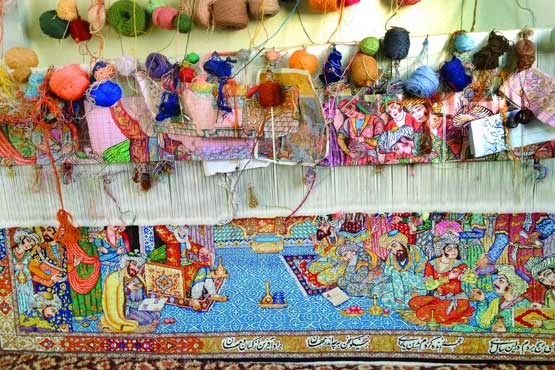Discovering the Rich Heritage of Afghan Rugs and Oriental Carpets
Afghan Rugs and oriental carpets and rugs hail from the weaving heartlands of West Afghanistan, where centuries-old traditions blend with contemporary craftsmanship to produce exquisite works of art. These carpets not only showcase traditional Afghan designs but also reflect influences from Persian and Caucasian weaving techniques. Among the notable styles are Khal Mohammedi, Ziegler-Chubi, Afghan Kazak, and Afghan Gabbeh, each characterized by distinct patterns and colour palettes.
Cultural and Geographical Context
Afghanistan, nestled in South Asia and bordered by Iran, Turkmenistan, Uzbekistan, Tajikistan, Pakistan, and China, boasts a landscape dominated by rugged mountains. Despite its challenging terrain, the region holds pockets of fertile land renowned for their agricultural productivity. The Afghan population, predominantly comprising diverse ethnic groups such as Pashtuns, Tajiks, Hazaras, and Uzbeks, contributes to the rich cultural tapestry of the country.
Artistry and Craftsmanship
Afghan oriental carpets are crafted using traditional methods handed down through generations. The materials used include cotton or wool for the warp and weft, with the pile typically made of high-quality wool. Some carpets may also incorporate goat or even horsehair, adding to their unique texture and durability. These materials, combined with meticulous hand-knotting techniques, ensure that Afghan carpets not only adorn floors but also stand the test of time.
Traditional Designs and Motifs
The designs of Afghan oriental carpets are steeped in symbolism and tradition. Patterns like göls (elephant-like motifs) and octagonal shapes are prevalent, often intertwined with curvilinear flowers in rich hues of dark blue, ochre, and beige. These motifs not only beautify the carpets but also tell stories of Afghan cultural heritage and craftsmanship passed down through the ages.
Influences and Innovations
In recent years, Afghan weavers have embraced Persian and Caucasian designs, blending traditional Afghan aesthetics with broader regional influences. This infusion of styles has expanded the diversity of Afghan oriental carpets, catering to a global market that values both authenticity and innovation in carpet weaving.
Challenges and Resilience
Afghanistan’s carpet industry has endured significant challenges due to internal conflicts and international interventions. Despite these hardships, Afghan weavers have persisted, continuing to produce carpets of exceptional quality and beauty. The resilience of the Afghan people is reflected in the craftsmanship of each carpet, which not only sustains a cultural legacy but also provides livelihoods for countless artisans across the country.
Popular Afghan Rugs and Carpets
Two of the most esteemed carpets from Afghanistan include:
- Khal Mohammadi: Handmade by Turkomans in northern Afghanistan and occasionally in Pakistan, these carpets are renowned for their deep red hues and intricate göl motifs. They symbolize the artistic prowess of Afghan weavers and the cultural richness of the Turkoman tradition.
- Afghan Aqche: Handcrafted by Turkomans in central and northern Afghanistan, Afghan Aqche carpets feature a blend of wool, goat hair, and sometimes horsehair. They are prized for their durability and timeless appeal, making them sought-after pieces in the world of carpet connoisseurs.
Afghan oriental carpets are not merely floor coverings but embodiments of Afghan artistry, culture, and resilience. From the rugged mountains of Afghanistan to homes and galleries worldwide, these carpets weave stories of tradition, craftsmanship, and the enduring spirit of a people. Each knot and motif tell a tale of heritage and craftsmanship that transcends borders and generations, making Afghan oriental carpets a treasured legacy of the global carpet industry.

